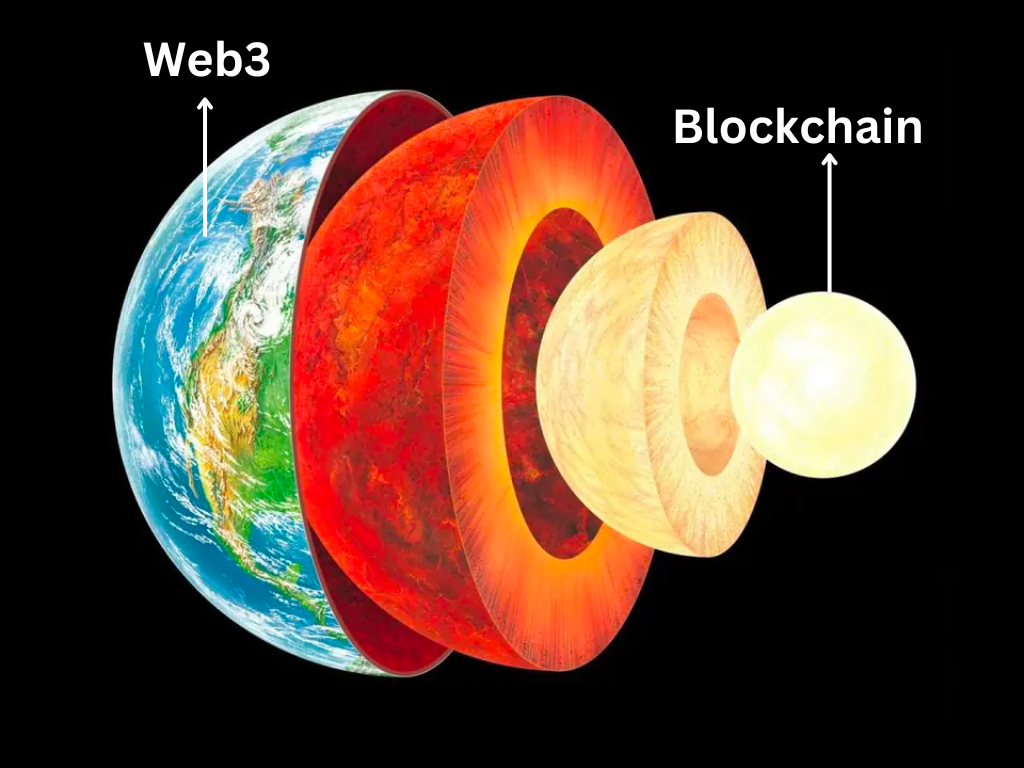Web3 is about easing the complexity of blockchain interactions and serving up a straightforward, practical experience to users. Just as we turn to Google for hassle-free searching, Web3 aims to deliver the advantages of blockchain without the complications and jargon.
Web3 is about easing the complexity of blockchain interactions and serving up a straightforward, practical experience to users. Just as we turn to Google for hassle-free searching, Web3 aims to deliver the advantages of blockchain without the complications and jargon.
However, getting to this goal of simplicity isn't an overnight job. It's a journey, similar to how the internet has evolved over time to its user-friendly state today. Right now, the blockchain is very complex for those who are new to it, a clear sign of the early stage of this emerging tech. Web3 is turning the blockchain experience around, opening up the world of blockchain benefits to a wider audience, tech-savvy or not.
Blockchain vs Web3
I perceive the blockchain as the foundational framework that enables the development of different applications to be built on top.
Blockchain definition: Blockchain technology is an advanced database mechanism that allows transparent information sharing within a network. A blockchain database stores data in blocks that are linked together in a chain. The data is chronologically consistent because you cannot delete or modify the chain without consensus from the network. As a result, you can use blockchain technology to create an unalterable or immutable ledger for tracking orders, payments, accounts, and other transactions.
Web3 can be understood as the user-facing layer or the applications that are constructed on top of the blockchain. These are the interfaces through which end users engage and interact with.
Web3 definition: Web3 refers to the vision and evolution of the internet that emphasises decentralisation, user ownership of data, and enhanced privacy. It aims to empower individuals by enabling direct peer-to-peer interactions, decentralised applications (dApps), and the use of blockchain and other technologies to create a more open and user-centric online ecosystem.
An analogy to illustrate the relationship between the blockchain and Web3 is the layered structure of the earth. The blockchain represents the inner core, serving as the foundational layer that supports the subsequent layers, while Web3 represents the earth's surface or crust, providing the visible and interactive layer where users directly engage with.

Larger companies are adopting blockchain to enhance their current products and providing the path to mass adoption for Web3. Let’s dive into Starbucks in more detail.
Brands adopting Web3: Starbucks' Odyssey Programme
At the moment, getting your head around the blockchain can be like trying to read a map in a foreign language. It's clear we've got some way to go, and that's where blockchain-friendly apps come in - they're here to make the journey a little bit easier for everyone.
Starbucks has taken a bold leap into the Web3 world with their Polygon-powered loyalty program, Odyssey. This gamified system allows users to earn valuable NFTs known as "Journey stamps" through engaging in-app activities. The ultimate goal? Brew up an engaging and rewarding customer experience while exploring potential revenue streams through blockchain technology.
Starbucks' Chief Marketing Officer, Brady Brewer, is upbeat, stating, "We’re bullish on the future of these technologies enabling experiences that were not possible before.” This initiative exemplifies a perfect blend of customer engagement, revenue exploration, and cutting-edge tech.
Starbucks has prioritised a seamless customer experience, crafting a blockchain-based program where the tech acts as a silent enabler. Brewer captures it succinctly, saying, “The customer may very well not even know that they’re interacting with blockchain technology.”
Their approach includes:
- Bypassing the need for wallet creation.
- Facilitating in-app stamp trades purchasable with regular credit or debit cards.
- Eliminating blockchain transaction fees.
- Avoiding complex blockchain jargon.
However, it's important to note that Starbucks may retain custody of the user's NFTs in these wallets - a crucial detail for users to keep in mind.
This move by Starbucks is just one example among many. Companies such as Ticketmaster and Stripe are also integrating blockchain technology to make user interactions smoother.
Web3 is slowly but surely becoming mainstream.
What’s next?
The ultimate goal of Web3 is for end users to be aware of their interaction with the blockchain without necessarily understanding its intricate workings.
The blueprint of the final blockchain, one that encapsulates all the layers below the surface of consumer interaction, remains a mystery being explored by a variety of innovators. The unresolved question: will the future of blockchain be multilayered, multichain, modular, or an integration of these forms? In my perspective, it is likely to be a combination that takes into account individual preferences and the specific requirements of different blockchain applications.
Similarly to the blockchain, there is a lot of innovation occurring with Web3 application layers, making the blockchain more accessible and easy to use. This innovation stems from a diverse range of players, including startups and established companies, creating a conducive environment that drives forward progress in the space.










